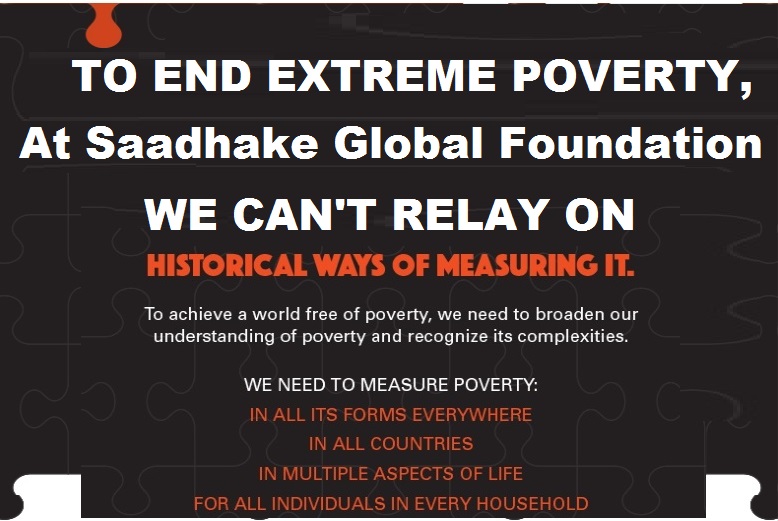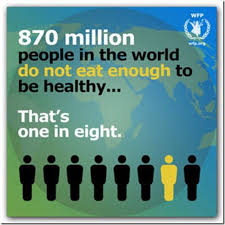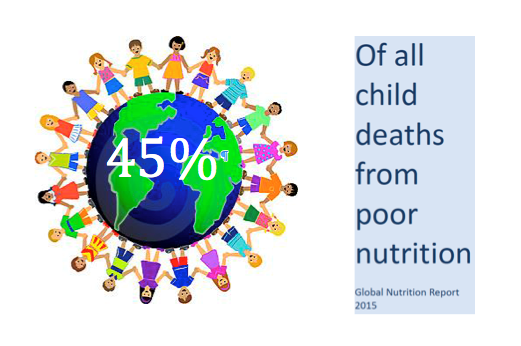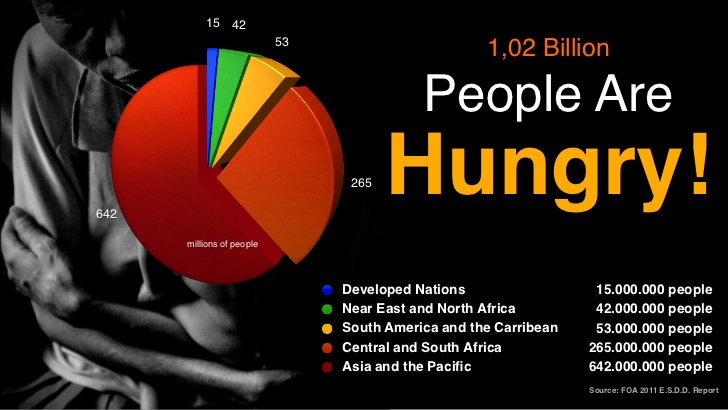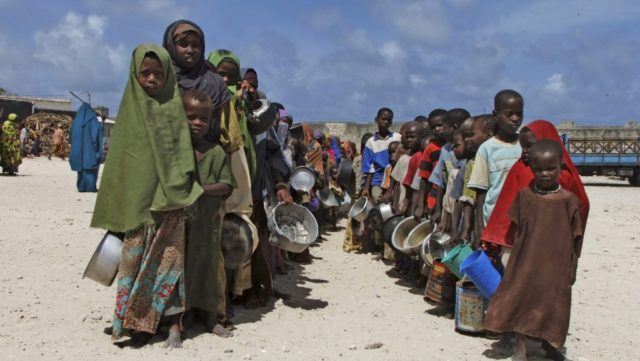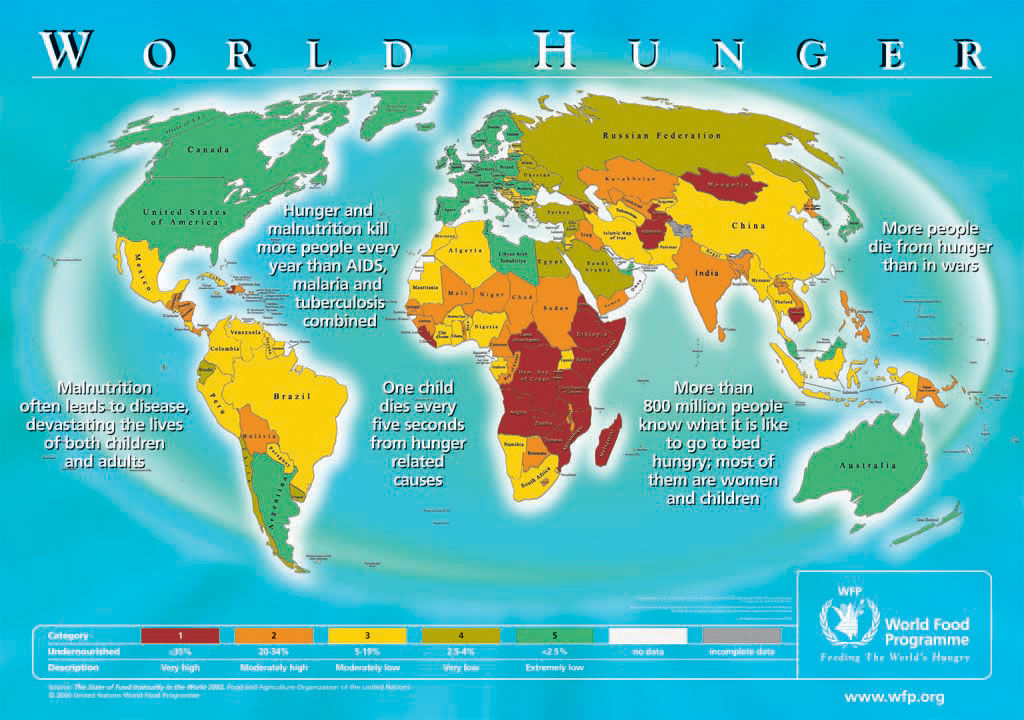
PEOPLE STARVATION FOR BASIC FOOD & IT'S SOLUTION
1 in 3 people worldwide suffer from some type of malnutrition, every country has a problem with at least one type of malnutrition.
Almost 1 billion people across the globe will go to bed hungry tonight, 200 million of them children.
842 million people in the world do not have enough to eat. Undernourishment kills more people every year than major diseases combined.
Asia has the largest number of hungry people (over 500 million) but Sub-Saharan Africa has the highest prevalence (24.8 percent of population).
If women farmers had the same access to resources as men, the number of hungry in the world could be reduced by up to 150 million.
At Saadhake, we work with Local Farmers, Organic farmers, Whole sale Distributors ,Exporters worldwide to get the best quality food items and to reach the Dishes of Abandoned Children, Poor families , Schools and Communities to full fill the hunger and nutrition in natural way in the form of Organic Rice, Wheat, Whole Grains and Pulses, Nuts , Raisins, Dry Fruits, Fruits, Rare Fruits, Spices and natural herbals. We do support local farmers and families motivate them to grow locally in small scales and to help themselves.
Approach and Execution Strategy for Agriculture Food Projects:
- Right from inception identifying the key local farmers as volunteers and involving them to help them selves and communities to be part of the on going Agricultural projects and work with local governments to follow the procedure and guidelines.
- Identifying water sources and lands those can yield based on past history of rain fall.
- Exploring the possibility to grow the Organic Crops , Vegetables, Fruits, Grains and Herbals that can be sufficient to grow the needs of local villages or communities.
- Offer the Cattle, Seeds, Organic Manure and necessary farming Equipment to grow the Grains, Crops , Fruits and Vegetables and back yards.
- Offer to villagers grains, vegetables, fruits and nuts ..etc..to the fill the gaps in order to sustain.
- Helping the villagers and train for few years until to a point of self sufficient sustainability
- Transfer the system to locals...watch them and touch base with them to help them when ever there is any need ..and inspire them for continuous improvement
- Move on next project..
- Help in all respects if any well designed projects on hold or half way completed because of financial resources or some other reasons in order to bring them in to prodcution
We hear about parts of the world going hungry every day, but what does that really mean? We've dug into some disturbing statistics to provide a clear picture about world hunger, including how many people in the world are starving and how many are dying every day. Unfortunately, many of them are children.
GLOBAL HUNGER STATISTICS
We begin our study with an overview of how far-reaching world hunger is. Specifically, we zero in on where hunger is most common and how hunger rates have changed over time.
How many people are starving worldwide?
The Food and Agriculture Organization of the United Nations (FAO) estimates that 870 million people lack the necessary food to live a healthy lifestyle. That's more than one-tenth of the world's population.
How many people die of hunger every day?
The FAO estimates that as many as 25,000 people lose their lives every day as a result of hunger. That adds up to roughly 9.1 million people who die of starvation each year.
Where do the majority of the world's hungry live?
Overwhelmingly, hunger is most rampant in still-developing nations. Altogether, 13.5% of the population in third-world countries is battling hunger.
Which continent has the largest population of hungry people?
Asia reports the highest number of people who are undernourished. Roughly two-thirds of the 4.3 billion people who live in Asia deal with a lack of food on a regular basis.
In what world region is hunger most prevalent?
While Asia leads in terms of the actual number of hungry people, the hunger rate based on percentage of the population is highest in Sub-Saharan Africa. That's where one in four people is considered undernourished.
How has the number of hungry people changed over the last decade?
According to the FAO, the world hunger population has declined by 167 million people over the last 10 years. The most recent figures represent a drop of 216 million since 1992.
HUNGER AND CHILDREN
While most of the world's hungry are adults, millions of children are affected by poor nutrition. For the next part of our study, we analyzed key data on the frequency of child hunger and the physical toll it carries.
How many children suffer from malnutrition worldwide?
UNICEF estimates that globally, 165 million children under the age of 5 experience stunted growth caused by lack of proper nutrition. That comes out to 1 in 4 kids who suffer long-term effects of hunger before first grade.
How widespread is child hunger?
Geographically speaking, 80% of the world's hungry children are concentrated in just 14 countries. Three-fourths of the families and individuals who struggle with hunger live in rural areas with economies that are centered around agriculture.
How many of the world's children are underweight?
The World Health Organization calculates that 1 in 6 children, or 101 million kids, in developing countries are below the normal weight recommended for their age range. Approximately 53 million of them live in Southern Asia.
When is child nutrition most critical?
The most important period in a child's life, nutritionally speaking, is the first 1,000 days, including when they're in utero and up to age 2. If children go hungry during this time, they're significantly more likely to be underweight or experience stunted growth.
How many children die of starvation each day?
It's believed that poor nutrition is responsible for 3.1 million deaths of children under 5 annually. That breaks down to 8,500 children every single day.
How many children go to school hungry?
Every day, 66 million children go to school hungry, according to the World Food Programme. Just over a third of them, some 23 million kids, live in Africa.
How many children don't attend school?
Approximately 67 million children worldwide don't attend school at all. In many cases, poor families either can't afford to send children to school or they deliberately keep them at home to help with duties that are tied to the household's source of income.
How common is child hunger in the U.S.?
As of 2013, just over 15 million children in the U.S. lived in what's called food-insecure households. The District of Columbia and Mississippi reported the highest rates, with nearly a third of the child population going without food.
WOMEN AND HUNGER
In third-world countries, women tend to be the primary caretakers of children and they're expected to contribute financially to the household. Farming is most often where they concentrate their work efforts, a type of job that is, somewhat ironically, often linked to higher hunger rates.
What role do women play in the economies of developing countries?
According to the United Nations, women account for 43% of the agricultural workforce in developing countries. Approximately 79% of women in developing nations say agriculture is their main source of income.
How do women in farming influence hunger rates?
Statistically, women working in agriculture produce 20% to 30% fewer crops than men. The FAO projects that if women had improved access to seeds, equipment, and other farming resources, it could reduce the world's hungry population by as much as 150 million people.
How does malnutrition in mothers affect their children?
Mothers who are malnourished are more likely to give birth to children who are undernourished, according to UNICEF. The end result is that babies who are born underweight are 20% more likely to die before the age of 5.
How common is anemia among pregnant mothers in developing countries?
Anemia is a blood cell deficiency that can be caused by lack of proper nutrition. The FAO estimates that roughly half of all pregnant women in developing nations are anemic, which contributes to 110,000 deaths during childbirth annually.
How does a mother's education influence hunger rates?
Surprisingly, the presence or lack of food is not the primary factor that determines whether children experience hunger. A greater connection can be made to a mother's level of education. The better educated she is, the more empowerment she has in her household, her life, and that of her children. Researchers have noted that with more education for women in these countries, the incidence of child hunger declines by 43% over time, versus 26% if just the availability of food was increased.
ADDRESSING WORLD HUNGER
Beyond the effect on the quality of human life, world hunger also comes with certain financial implications. To wrap things up, we analyzed data on food waste and the economics of combating world hunger.
How much food is wasted worldwide each year?
A staggering amount of food ends up in the trash year. According to the United Nations, an estimated 1.3 billion tons of edible food products are thrown away.
What's the cost of food waste?
More than a quarter of the world's agricultural land is used to produce food that's eventually wasted. Financially speaking, roughly $750 billion is spent on producing or purchasing food that ends up in the garbage.
How much money is needed to feed the world's hungry children?
Compared to the amount of money spent on food waste, the number required to feed the world's 66 million hungry children is actually quite small. According to the World Food Programme, the cost comes to $3.2 billion per year.
How much would it take to stem hunger worldwide?
The amount of money needed to battle hunger on a global scale is around $30 billion annually, according to estimates from the United Nations. That breaks down to about $4.30 per person.
FINAL WORD
Although it's been on a steady decline, world hunger remains a serious problem that isn't going away any time soon. Research on the many factors that play a role in this hunger crisis and statistics about its effect helps to show how deep the issue goes.


.
